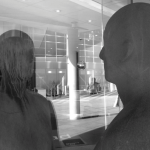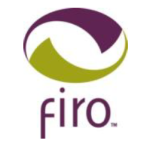Doctors and their working relationships.
07 June 2017
How we get on with people at work really affects us. Seems obvious, but it is not easy, especially when everyone is under so much pressure.
 When working with teams or individuals the quality of our relationships; our ability to trust and manage healthy conflict all contribute to our sense of well-being and ultimately resilience. But obviously we all have a different approach to managing our relationships, based on our underlying needs and what we are prepared to show we want.
So, as part of my CPD for 2017 I decided to train in a diagnostic tool with OPP to learn more about our interpersonal behaviours - specifically how we orientate ourselves to those around us. This is why I chose the FIRO (Fundamental Interpersonal Relations Orientation) instrument. It is grounded in solid research developed over 50years and gives practical insight with an objective report on what you might want and how you might express this to others.
When working with teams or individuals the quality of our relationships; our ability to trust and manage healthy conflict all contribute to our sense of well-being and ultimately resilience. But obviously we all have a different approach to managing our relationships, based on our underlying needs and what we are prepared to show we want.
So, as part of my CPD for 2017 I decided to train in a diagnostic tool with OPP to learn more about our interpersonal behaviours - specifically how we orientate ourselves to those around us. This is why I chose the FIRO (Fundamental Interpersonal Relations Orientation) instrument. It is grounded in solid research developed over 50years and gives practical insight with an objective report on what you might want and how you might express this to others.
Why is this useful in a busy healthcare environment?
Those of us who have worked in or continue to work in the healthcare sector know, without a doubt, that it is the people that really make the system what it is. And it is the quality of their relationships with each other that see them through times of great stress or brilliant innovation. So understanding how you orientate your self to others is a additional insight that is highly valuable.
So how does FIRO work?
The model breaks down into three areas that Will Schutz described in1958 -originally devised to measure and predict the interaction between people for the purpose of assembling highly productive teams in the US Navy. Schutz describes our interpersonal needs* as:Involvement Influence Connection
*FIRO Business version Schutz says these interpersonal needs are as basic as our need for food, shelter and water. The model scores you across these three areas, but crucially it breaks this down further into 'Expressed Behaviours' (what others see you displaying as your need) and 'Wanted Behaviours' (what you'd like to receive from others, but might be less visible). Example: I got a score that is relatively high for Expressed Involvement but lower for Wanted Involvement. What this could mean is that I express visibly a need for involvement in group activities - that is what people are seeing, but my actual need for involvement is lower than this = potential mixed messages?Aligning FIRO, MBTI and Leadership Development
Helpfully the FIRO model can be used alongside your existing MBTI learning because both MBTI and FIRO give you a perspective on your leadership behaviours that can be incredibility helpful in understanding how you interact with and affect those around you.Both instruments tap into key aspects of personality and behavior in areas such as communication, problem solving, decision making, and interpersonal relations. The instruments are also distinct, each providing a view of your leadership personality through a different window. Together, they complement each other and provide rich information of use in your personal, ongoing leadership development program. OPP Leadership Report using MBTI and FIRO.
FIRO for Individuals and Teams
As with MBTI Step I & II, you can use FIRO to build self awareness in individuals and then use this to enable greater understanding of difference and similarities within teams. If you would like to talk to me about FIRO and your development needs as a individual or your team call me on 0754 0593476 or email me at alexis@alexishutson.com.
If you would like to talk to me about FIRO and your development needs as a individual or your team call me on 0754 0593476 or email me at alexis@alexishutson.com. 